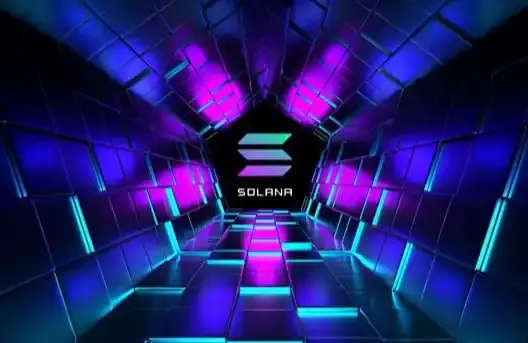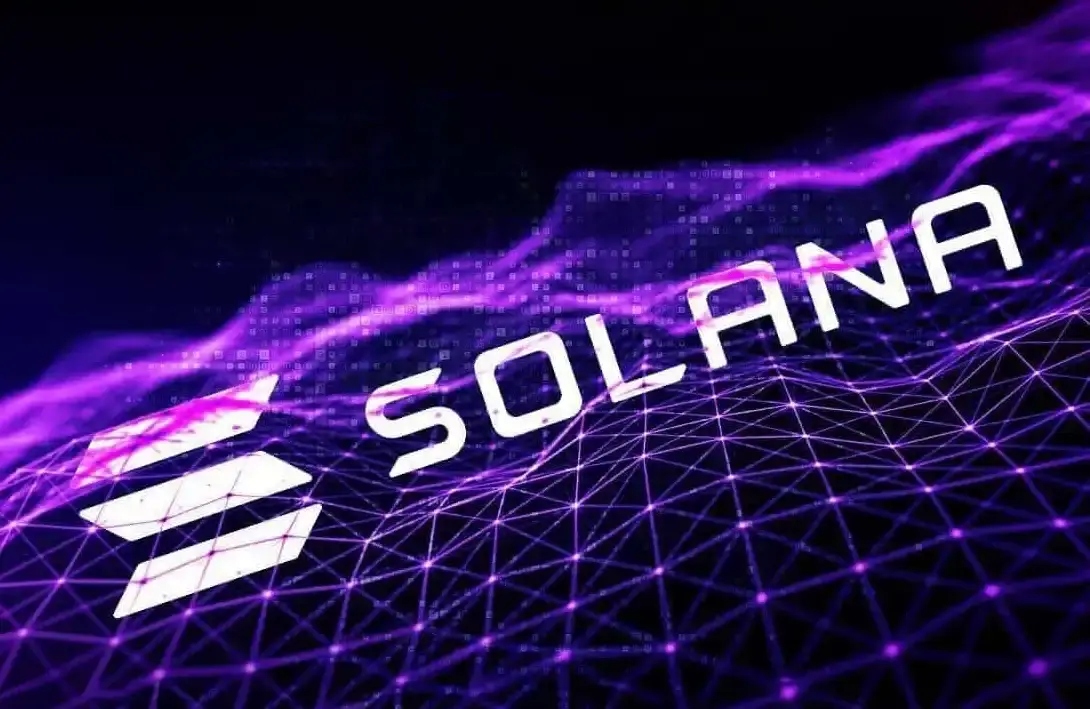Multicoin: A Detailed Explanation of the Decentralized Database Protocol Ceramic
Original Author: Kyle Samani, Co-founder of Multicoin Capital
Original Title: 《The Composable Web3 Data Network》
Compiled by: Yangz, Babit
A few months ago, at the 2021 Multicoin Summit, I gave a keynote speech emphasizing that composability is the most important development in the crypto space for 2022. While that talk specifically focused on the composability of financial assets on the Solana blockchain, financial composability is not the only form of composability. There is a larger opportunity for composability, which is data composability.
The foundational layer of the crypto ecosystem is Layer 1. These networks are widely considered as such because they all have a set of sovereign nodes that reach consensus on state at some rhythm. However, they are functionally different, and based on the types of state they track, how they reach consensus, and the types of applications they can support, L1s can be categorized into several main types:
- Asset ledgers - Bitcoin, Ethereum, Solana, Polygon, Flow, Near, Avalanche, Terra, etc.
- Storage ledgers - Filecoin, Arweave, Sia, etc.
- Data ledgers - Ceramic
- Distributed ledgers for specific applications - Osmosis, Helium, Thorchain, Sommelier, Auth Network, etc.
We have long believed that the Solana blockchain will become the mainstream crypto-native asset ledger. We also believe that Ceramic will become the dominant data ledger, and today we want to announce that we have co-led a $30 million investment in Ceramic with Union Square Ventures. In addition to USV, this round of investment also includes Coinbase Ventures, CoinFund, Collabfund, Dapper Labs, DCG, Edge and Node, Figment, Hashed, Jump Crypto, Metacartel Ventures, Not Boring Capital, Northzone, P2P Capital, Placeholder, Protocol Labs, Reciprocal Ventures, Variant Fund, Venrock, and over 50 crypto angel investors and community members.
Scarcity and Abundance
Asset distributed capital like Ethereum and Solana does one very simple thing: it records who owns how many tokens (including fungible and non-fungible tokens). The net output of these systems is very straightforward.
From another perspective, asset distributed capital manages scarcity. For any given asset, there must be a corresponding fixed number of tokens at any given point in time. In each transaction—payment, trading, lending, etc.—one person reduces their token balance while another person increases theirs.
However, the trajectory of the internet over the past 30 years has not been about scarcity. In fact, it has been the opposite. It has been about abundance. More of everything—more data, more images, more computers, more servers, more friends, more followers, more connections, more consumption, more sharing, and so on.
In scarcity-centric applications, when some users gain tokens, others must lose tokens. But in abundance-centric applications, users can create unlimited amounts of data and content. You can write an unlimited number of tweets and follow an unlimited number of accounts. This key distinction makes it necessary to establish a new type of Layer 1 to handle these types of data-centric use cases and transaction volumes.
Solana is a scarcity-centric web3 application (who has how many tokens), while Ceramic will be an abundance-centric web3 application (who wrote which tweets). If a decentralized Twitter were to emerge one day, then dTweets would be hosted on Ceramic.
With the explosive growth in areas like NFTs, web3 social applications, and crypto gaming, there is now sufficient developer interest to guide a composable, decentralized database. Today, thousands of developers have built over 400 applications on Ceramic, making it the leading decentralized data network.
System Overview
All distributed ledgers—asset distributed capital, storage distributed capital, data distributed capital, etc.—must achieve three properties simultaneously:
· Scale -- Without scale, software is just a toy.
· Composability -- As more data, state, and functionality are added to the decentralized ledger, they increase the breadth and depth of the underlying system, upon which new applications can be built. Composability is the ultimate network effect.
· Logical Centralization -- As systems become logically fragmented (often to support scale), they become increasingly complex and difficult to build. While the core benefit of composability is the compound network effect, breaking logical centralization to support scalability will hinder developers from truly realizing this benefit. We have emphasized the importance of logical centralization for years.
Scale
One of the reasons for Solana's success is its ability to achieve tens of thousands of transactions per second in financial applications (and it is expected to scale to millions in the coming years). If Ceramic is to host decentralized versions of applications like Twitter, Facebook, Reddit, Snapchat, TikTok, etc., then Ceramic must scale to hundreds of millions of transactions per second. This is a completely different level of scale.
To achieve this, Ceramic has made some very principled decisions about the data structures of its ledger. Most importantly, in Ceramic, there is no concept of state that can be shared between people (e.g., transferable tokens or AMM pools). Each piece of state belongs solely to the person who created it, and no one can modify another person's state (although any user can link to the state owned by another user).
A useful mental model for Ceramic is that each user has a collection of JSON documents called Streams, which only they, as the owners of these documents, can modify. The content stored in each document is arbitrary and can reference content from any other user's document. Note that this does not preclude computation. Developers can write functions called streamcode that define how these documents are updated and what actions are taken on each new update. For example, for a Twitter-like application, a developer could define a userTotalTweetCount function that increments that function each time a user publishes a tweet to their Ceramic stream.
The beauty of this principled architecture (which unravels state between users) is that the system can scale horizontally very cleanly. You can imagine a world where user accounts 1-1,000,000 are replicated across one set of Ceramic nodes, while user accounts 1,000,001-2,000,000 are replicated across another set of nodes. Theoretically, if needed, the network could shard all the way down to each user without breaking composability. To ensure the verifiability and composability of state between user shards, Ceramic relies on a Merkle tree data structure that aggregates all users' transactions, allowing any user to verify the integrity of any other user's JSON document at any time.
Composability
Ceramic achieves cross-application data composability primarily through a novel abstraction called the data model, which unifies how similar applications store and retrieve the state of each user on the network. For example, you can imagine that every implementation of a decentralized Twitter would run on some shared data model: one for each user's tweets, one for their social graph, one for their DMs, and so on. By adopting the same underlying data model, applications can natively interoperate on the same data.
To some extent, you can compare Ceramic's use of data model standards to the use of token standards in asset distributed ledgers. For example, the introduction of ERC-20 fungible tokens and ERC-721 non-fungible token standards on Ethereum has spawned an entire ecosystem of token and financial applications, allowing them to naturally interoperate. Ceramic brings this concept to data.
Ceramic takes a community-driven approach to creating these data models, allowing any developer to easily define, share, and reuse their models with other developers in the ecosystem. As more data models are created by the community, we will see an expanding number and variety of applications built using composable data.
This composability also brings a better developer experience. Building an application on Ceramic looks like browsing a marketplace of data models, plugging them into your application, and automatically gaining access to all the data stored in those models on the network. With Ceramic, developers will not need to worry about guiding their applications with their own isolated users and data. The speed of compound innovation for developers will be greatly accelerated.
L.F.G.
The Ceramic network is live, and the SDK can be obtained here. We have invested in several companies that are building on Ceramic.
Since June 2021, the Ceramic network has been in a testing phase and has been hosted by a few early supporters. In the coming months, the network will decentralize to more hosts and become a fully permissionless network, allowing anyone to host content on the Ceramic network. To transition the network to permissionless hosting, Ceramic will launch a token that will serve as an economic layer to incentivize people to host the Ceramic network around the world, somewhat similar to IPFS and Filecoin.
One of my favorite aspects of Ceramic is that it unlocks new capabilities for developers building on asset ledgers today. Developers building on any major asset ledger—Ethereum, Solana, Polygon, Avalanche, Near, Luna, Flow, etc.—can simultaneously leverage Ceramic's data-centric capabilities to enhance their applications. Through Ceramic's flexible DID-based account system, Ceramic naturally interfaces with the private keys that users of any major asset ledger are already using. Because of this, I hope to see developers building on all major asset ledgers also adopt Ceramic in parts of their applications.
As thousands of developers launch applications on Ceramic this year, the number of composable states in the Ceramic network will explode, providing a vibrant data foundation for creating sustained higher-order applications.
Related Articles:











